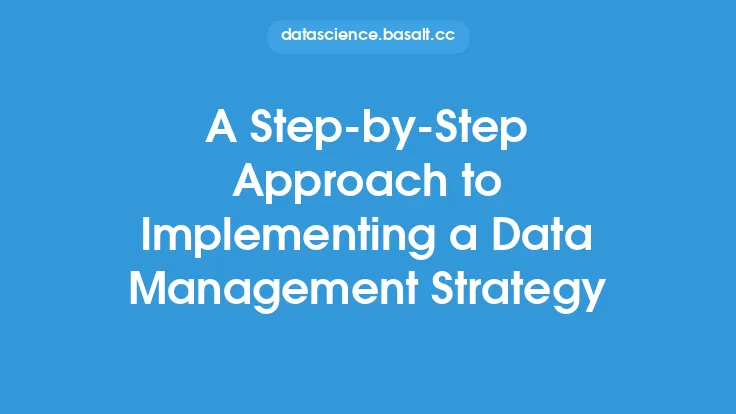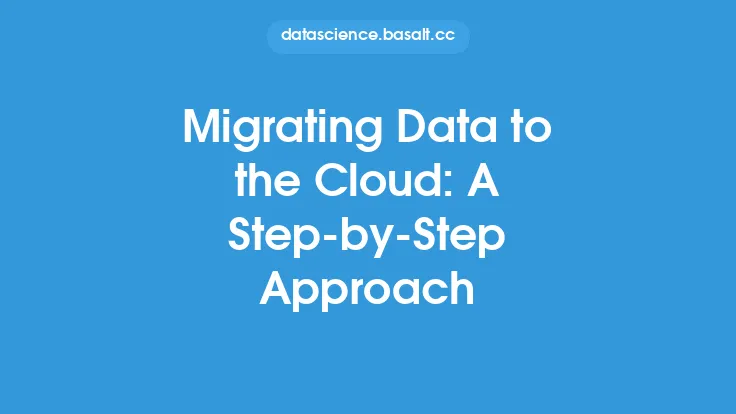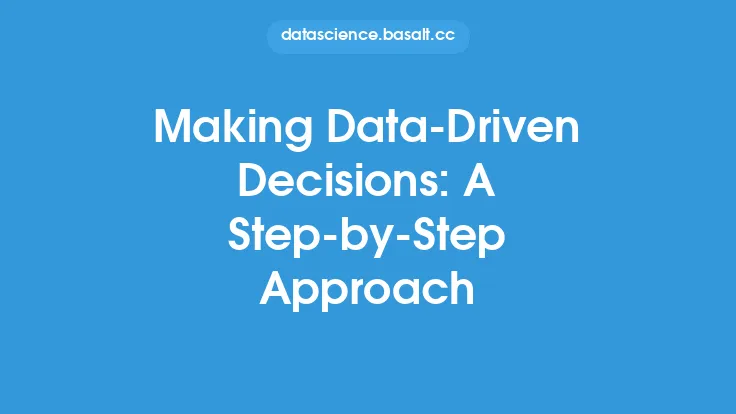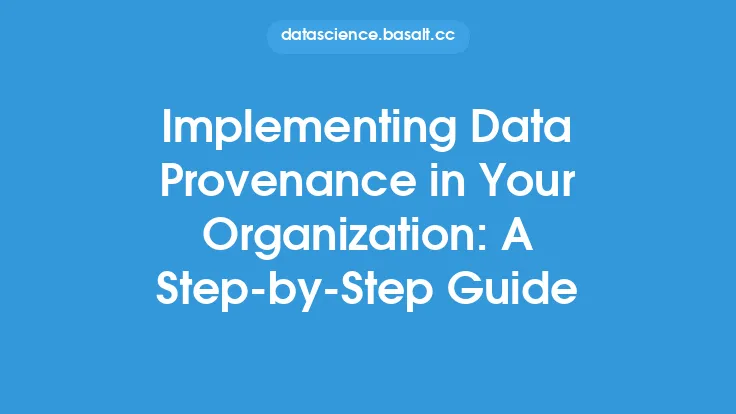Implementing data integrity controls is a crucial step in ensuring the accuracy, completeness, and consistency of data within an organization. Data integrity refers to the quality of being accurate, complete, and consistent, and it is essential for making informed business decisions, maintaining customer trust, and complying with regulatory requirements. In this article, we will provide a step-by-step approach to implementing data integrity controls, highlighting the key steps, techniques, and best practices involved.
Understanding Data Integrity Controls
Data integrity controls are measures put in place to ensure that data is accurate, complete, and consistent throughout its lifecycle. These controls can be manual or automated and are designed to prevent, detect, and correct data errors. There are several types of data integrity controls, including data validation, data verification, data normalization, and data reconciliation. Data validation involves checking data for accuracy and completeness at the point of entry, while data verification involves checking data against a trusted source to ensure its accuracy. Data normalization involves transforming data into a standard format to ensure consistency, and data reconciliation involves comparing data from different sources to identify discrepancies.
Identifying Data Integrity Risks
The first step in implementing data integrity controls is to identify potential data integrity risks. These risks can arise from various sources, including human error, system errors, and external factors such as hacking and data breaches. To identify data integrity risks, organizations should conduct a thorough risk assessment, which involves analyzing data flows, identifying potential vulnerabilities, and evaluating the likelihood and impact of data errors. This risk assessment should be conducted regularly to ensure that new risks are identified and addressed promptly.
Designing Data Integrity Controls
Once data integrity risks have been identified, the next step is to design data integrity controls to mitigate these risks. This involves developing a data integrity control framework that outlines the policies, procedures, and standards for ensuring data integrity. The framework should include data validation rules, data verification procedures, data normalization standards, and data reconciliation protocols. It should also specify the roles and responsibilities of personnel involved in data management and the procedures for monitoring and reporting data integrity issues.
Implementing Data Integrity Controls
Implementing data integrity controls involves putting the designed controls into operation. This can be done manually or through automation, depending on the complexity and volume of data. Manual implementation involves training personnel to follow established procedures and protocols, while automated implementation involves using software tools and technologies to enforce data integrity controls. Automated implementation is generally more effective and efficient, especially for large datasets, as it reduces the risk of human error and increases the speed of data processing.
Monitoring and Reporting Data Integrity Issues
Monitoring and reporting data integrity issues are critical components of implementing data integrity controls. This involves regularly reviewing data for errors, inconsistencies, and discrepancies, and reporting any issues to the relevant personnel or authorities. Monitoring can be done manually or through automated tools, such as data quality software, which can detect and report data integrity issues in real-time. Reporting should be done in a timely and transparent manner, with clear documentation of the issues, their causes, and the actions taken to resolve them.
Maintaining and Updating Data Integrity Controls
Finally, maintaining and updating data integrity controls is essential to ensure their continued effectiveness. This involves regularly reviewing and updating the data integrity control framework, as well as the policies, procedures, and standards that support it. It also involves providing ongoing training to personnel involved in data management, as well as monitoring and reporting data integrity issues. Additionally, organizations should stay up-to-date with emerging trends and technologies in data integrity, such as artificial intelligence and machine learning, which can be used to enhance data integrity controls.
Technical Considerations
From a technical perspective, implementing data integrity controls requires a range of skills and expertise, including data modeling, database design, and software development. It also requires a deep understanding of data quality principles and practices, as well as the ability to design and implement effective data integrity controls. Some common technical considerations include data validation using SQL or other programming languages, data verification using data matching or data profiling techniques, and data normalization using data transformation or data mapping techniques. Additionally, organizations may need to consider data encryption, access controls, and auditing to ensure the security and integrity of their data.
Best Practices
To ensure the effective implementation of data integrity controls, organizations should follow best practices, such as establishing clear policies and procedures, providing ongoing training to personnel, and regularly monitoring and reporting data integrity issues. They should also stay up-to-date with emerging trends and technologies in data integrity and continuously review and update their data integrity control framework. Additionally, organizations should consider implementing data governance frameworks, which provide a structured approach to managing data and ensuring its quality and integrity. By following these best practices, organizations can ensure the accuracy, completeness, and consistency of their data, which is essential for making informed business decisions and maintaining customer trust.





